Rs. 40000 - Rs. 55 lakh
You may be eligible for a pre-approved offer
Enter mobile and OTP | Check offer | No branch visit needed
An overdraft facility is a flexible financial arrangement that allows you to withdraw more funds than your available account balance, up to a pre-approved limit. It essentially acts as a short-term credit line, helping individuals and businesses cover urgent expenses or manage temporary cash flow gaps with ease.
Unlike traditional loans, an overdraft loan doesn’t require a separate loan application every time you need funds. Instead, the approved limit is linked directly to your existing savings or current account, enabling quick and easy access to money whenever required.
For salaried individuals, a personal overdraft loan can be particularly useful. It offers immediate liquidity during emergencies like medical expenses, utility bills, or unexpected travel needs. Since the interest is charged only on the utilised amount and for the duration of use, it often works out to be more cost-effective than a standard loan.
If you’re looking for a convenient way to meet short-term financial requirements without the hassle of repeated approvals, an overdraft loan for salaried professionals can be a smart solution. It combines the benefits of easy access, flexible repayment, and interest-on-use, making it a practical choice for day-to-day financial stability.
✅ Check your pre-approved loan offer with phone number and OTP → Apply online in 5 minutes → Receive funds within 24 hours*.
What is overdraft facility?
An overdraft facility is a short-term credit that allows you to withdraw funds beyond your account balance, up to a pre-set limit. It’s useful for urgent cash needs. Essentially, it works like an instant overdraft loan, with interest charged only on the amount you use. Regular repayments help you avoid overdraft facility due charges.
How to apply for an overdraft facility?
- Check eligibility – Most banks and NBFCs offer overdraft facilities to salaried individuals, business owners, or account holders with a good account history.
- Choose the type – Decide between a personal overdraft (for salaried individuals) or a business overdraft (for business cash flow needs).
- Gather documents – Typically required:
- Identity proof (Aadhaar, PAN, Passport)
- Address proof
- Bank statements (last 3–6 months)
- Income proof or salary slips
- Apply online or at the branch – Many banks allow you to apply through internet banking or mobile banking. You can also visit the branch for a physical application.
- Approval & limit sanction – The bank reviews your account and credit history before approving a pre-set overdraft limit.
- Activation & usage – Once activated, you can withdraw funds up to the approved limit, with interest charged only on the utilised amount.
Types of overdrafts
| Type of overdraft | Description |
|---|---|
| Personal overdraft | Offered to salaried individuals for short-term personal expenses, like medical bills, travel, or emergencies. Linked to savings or current accounts. |
| Business overdraft | Designed for businesses to manage cash flow gaps, pay suppliers, or cover operational expenses. Linked to current accounts. |
| Secured overdraft | Requires collateral such as fixed deposits, property, or other assets. Typically offers higher limits and lower interest rates. |
| Unsecured overdraft | No collateral required. Limit and interest rate depend on creditworthiness and account history. |
| Clean overdraft | A type of unsecured overdraft with minimal documentation, often granted to customers with a good banking relationship. |
Also read - Overdraft vs personal loan
Features of Overdraft facility
| Feature | Description |
|---|---|
| Flexible credit | Allows withdrawal beyond account balance up to a pre-approved limit. |
| Interest on utilised amount | Interest is charged only on the amount you use, not the full limit. |
| Linked to account | Connected directly to a savings or current account for easy access. |
| Short-term funding | Ideal for urgent expenses or temporary cash flow gaps. |
| Quick access | Funds are available immediately once the facility is approved. |
| Repayment flexibility | You can repay partially or fully anytime, reducing interest costs. |
| Secured or unsecured | Can be backed by collateral (secured) or granted based on creditworthiness (unsecured). |
| Overdraft limit | The bank sets a maximum withdrawal limit based on eligibility and account history. |
Flexi Personal Loan
A Flexi Personal Loan is a type of personal loan that offers flexible borrowing and repayment options. Unlike a standard personal loan, it allows you to withdraw only the amount you need from an approved limit, repay partially, and reuse the limit as required.
Key features of a Flexi Personal Loan:
| Feature | Description |
|---|---|
| Flexible withdrawal | Borrow only what you need from the sanctioned limit. |
| Partial repayment | Repay a part of the borrowed amount anytime to reduce interest. |
| Reusable credit | Once repaid, the withdrawn amount becomes available to borrow again. |
| Interest on utilised amount | Interest is charged only on the amount you actually use. |
| Quick access | Funds can be accessed as needed, offering liquidity during emergencies. |
| Suitable for salaried and professionals | Ideal for managing personal expenses, medical bills, or travel. |
Benefits of a Flexi Personal Loan
Take a quick look at the advantages of a Flexi Personal Loan
- With a Flexi Personal Loan, you only have to pay interest on what you have withdrawn and not the entire sanctioned amount.
- As the amount is pre-sanctioned, you can withdraw from it instantly.
- You can use funds from the loan as per your requirement — for personal, professional, planned, or unplanned needs.
- As this facility simplifies borrowing and repaying, you can use this to build a good credit history and boost your credit score.
To avail of these benefits of the personal loan, apply for the Flexi facility offered by Bajaj Finance Limited.
Conclusion
Applying for an overdraft is a simple and convenient way to manage short-term cash needs. By understanding how the overdraft facility works, applying online, and knowing what to expect after activation, you can use it responsibly to maintain steady cash flow and avoid financial strain.
Key offerings: 3 loan types
Personal loan interest rate and applicable charges
Type of fee |
Applicable charges |
Rate of interest per annum |
10% to 31% p.a. |
Processing fees |
Up to 3.93% of the loan amount (inclusive of applicable taxes). |
Flexi Facility Charge |
Term Loan – Not applicable Flexi Loans –Up To Rs 1,999 To Up To Rs 18,999/- (Inclusive Of Applicable Taxes) |
Bounce charges |
Rs. 700 to Rs. 1,200/- per bounce “Bounce Charges” shall mean charges levied on each instance in the event of: (i) dishonour of any payment instrument irrespective of whether the customer subsequently makes the payment through an alternate mode or channel on the same day; and/or (ii) non-payment of instalment(s) on their respective due dates where any payment instrument is not registered/furnished; and/or (iii) rejection or failure of mandate registration by the customer’s bank. |
Part-prepayment charges |
Full Pre-payment: |
Penal charge |
Delay in payment of instalment(s) shall attract Penal Charge at the rate of up to 36% per annum per instalment from the respective due date until the date of receipt of the full instalment(s) amount. |
Stamp duty (as per respective state) |
Payable as per state laws and deducted upfront from loan amount. |
Annual maintenance charges |
Term Loan: Not applicable Flexi Term (Dropline) Loan: Up to 0.30% (Inclusive of applicable taxes) of the Dropline limit (as per the repayment schedule) on the date of levy of such charges.
Up to 0.30% (Inclusive Of Applicable Taxes) Of The Dropline Limit During Initial Tenure. Up to 0.30% (Inclusive Of Applicable Taxes) Of Dropline Limit During Subsequent Tenure |
Related articles
Disclaimer
Bajaj Finance Limited has the sole and absolute discretion, without assigning any reason to accept or reject any application. Terms and conditions apply*.
For customer support, call Personal Loan IVR: 7757 000 000









 Personal Loan
Personal Loan Check Eligibility
Check Eligibility Salaried Personal Loan
Salaried Personal Loan EMI Calculator
EMI Calculator Account Aggregator
Account Aggregator Credit Pulse Report
Credit Pulse Report
 Deals starting @99
Deals starting @99 Min. 50% off
Min. 50% off
 Bajaj Pay
Bajaj Pay Wallet to Bank
Wallet to Bank
 Easy EMI Loan
Easy EMI Loan Savings Offer
Savings Offer Smartphones
Smartphones Led TVs
Led TVs Washing Machines
Washing Machines Laptops
Laptops Refrigerators
Refrigerators Air Conditioner
Air Conditioner Air Coolers
Air Coolers
 Loan Against Shares
Loan Against Shares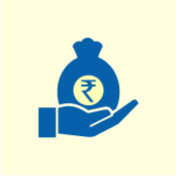 Loan Against Mutual Funds
Loan Against Mutual Funds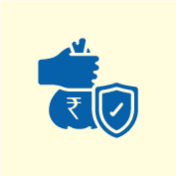 Loan Against Insurance Policy
Loan Against Insurance Policy ESOP Financing
ESOP Financing Easy EMI Loan
Easy EMI Loan Two-wheeler Loan
Two-wheeler Loan Loan for Lawyer
Loan for Lawyer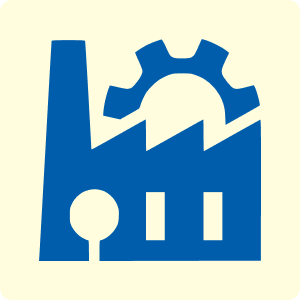 Industrial Equipment Finance
Industrial Equipment Finance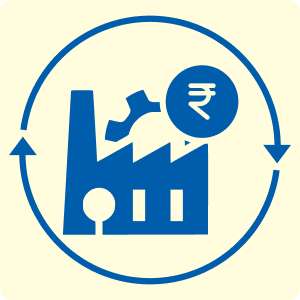 Industrial Equipment Balance Transfer
Industrial Equipment Balance Transfer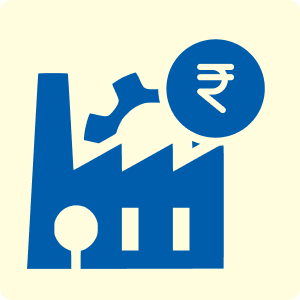 Industrial Equipment Refinance
Industrial Equipment Refinance Personal Loan Branch Locator
Personal Loan Branch Locator Used Tractor Loan
Used Tractor Loan Loan Against Tractor
Loan Against Tractor Tractor Loan Balance Transfer
Tractor Loan Balance Transfer Flexi
Flexi View All
View All
 Two-wheeler Loan
Two-wheeler Loan Bike
Bike Scooter
Scooter Electric Vehicle
Electric Vehicle Best Sellers
Best Sellers Popular Brands
Popular Brands

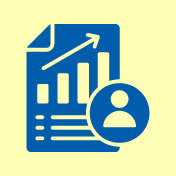 Trading Account
Trading Account Open Demat Account
Open Demat Account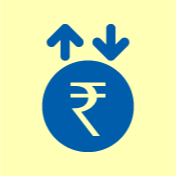 Margin Trading Financing
Margin Trading Financing Share Market
Share Market Invest in IPO
Invest in IPO All stocks
All stocks Top gainers
Top gainers Top losers
Top losers 52 week high
52 week high 52 week low
52 week low Loan against shares
Loan against shares
 Home Loan
Home Loan Transfer your existing Home loan
Transfer your existing Home loan Loan against Property
Loan against Property Home Loan for Salaried
Home Loan for Salaried Home loan for self employed
Home loan for self employed Loan Against Property Balance Transfer
Loan Against Property Balance Transfer Home Loan EMI Calculator
Home Loan EMI Calculator Home Loan eligibility calculator
Home Loan eligibility calculator Home Loan balance transfer
Home Loan balance transfer View All
View All
 Term Life Insurance
Term Life Insurance ULIP Plan
ULIP Plan Savings Plan
Savings Plan Family Insurance
Family Insurance Senior Citizen Health Insurance
Senior Citizen Health Insurance Critical Illness Insurance
Critical Illness Insurance Child Health Insurance
Child Health Insurance Pregnancy and Maternity Health Insurance
Pregnancy and Maternity Health Insurance Individual Health Insurance
Individual Health Insurance Low Income Health Insurance
Low Income Health Insurance Student Health Insurance
Student Health Insurance Group Health Insurance
Group Health Insurance Retirement Plans
Retirement Plans Child Plans
Child Plans Investment Plans
Investment Plans
 Business Loan
Business Loan Secured Business Loan
Secured Business Loan Loan against property
Loan against property Loans against property balance transfer
Loans against property balance transfer Loan against shares
Loan against shares Home Loan
Home Loan Loans against mutual funds
Loans against mutual funds Loan against bonds
Loan against bonds Loan against insurance policy
Loan against insurance policy
 Apply for Gold Loan
Apply for Gold Loan Transfer your Gold Loan with Us
Transfer your Gold Loan with Us Gold Loan Branch Locator
Gold Loan Branch Locator
 ULIP Plan
ULIP Plan Savings Plan
Savings Plan Retirement Plans
Retirement Plans Child Plans
Child Plans Free Demat Account
Free Demat Account Invest in Stocks
Invest in Stocks Invest in IPO
Invest in IPO Margin Trading Facility
Margin Trading Facility Fixed Deposit Branch Locator
Fixed Deposit Branch Locator
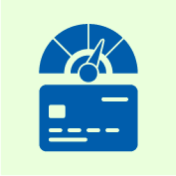 Check your Credit Score
Check your Credit Score
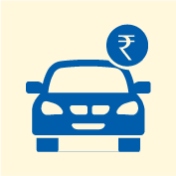 New Car Loan
New Car Loan Used Car Loan
Used Car Loan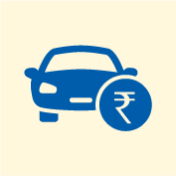 Loan Against Car
Loan Against Car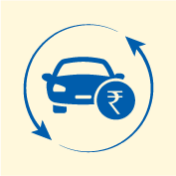 Car Loan Balance Transfer and Top-up
Car Loan Balance Transfer and Top-up My Garage
My Garage
 Get Bajaj Prime
Get Bajaj Prime
 Mobiles on EMI
Mobiles on EMI Electronics on EMI Offer
Electronics on EMI Offer  Iphone on EMI
Iphone on EMI LED TV on EMI
LED TV on EMI Refrigerator on EMI
Refrigerator on EMI Laptop on EMI
Laptop on EMI Kitchen appliances on EMI
Kitchen appliances on EMI Washing machines
Washing machines
 Personal Loan EMI Calculator
Personal Loan EMI Calculator Personal Loan Eligibility Calculator
Personal Loan Eligibility Calculator Home Loan EMI Calculator
Home Loan EMI Calculator Home Loan Eligibility Calculator
Home Loan Eligibility Calculator Good & Service Tax (GST) Calculator
Good & Service Tax (GST) Calculator Flexi Day Wise Interest Calculator
Flexi Day Wise Interest Calculator Flexi Transaction Calculator
Flexi Transaction Calculator Secured Business Loan Eligibility Calculator
Secured Business Loan Eligibility Calculator Fixed Deposits Interest Calculator
Fixed Deposits Interest Calculator Two wheeler Loan EMI Calculator
Two wheeler Loan EMI Calculator New Car Loan EMI Calculator
New Car Loan EMI Calculator Used Car Loan EMI Calculator
Used Car Loan EMI Calculator All Calculator
All Calculator Used Tractor Loan EMI Calculator
Used Tractor Loan EMI Calculator
 Hot Deals
Hot Deals Clearance Sale
Clearance Sale Kitchen Appliances
Kitchen Appliances Tyres
Tyres Camera & Accessories
Camera & Accessories Mattresses
Mattresses Furniture
Furniture Watches
Watches Music & Audio
Music & Audio Cycles
Cycles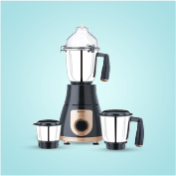 Mixer & Grinder
Mixer & Grinder Luggage & Travel
Luggage & Travel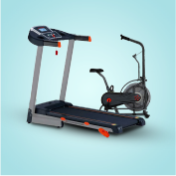 Fitness Equipment
Fitness Equipment Fans
Fans
 Personal Loan for Doctors
Personal Loan for Doctors Business loan for Doctors
Business loan for Doctors Home Loan
Home Loan Secured Business Loan
Secured Business Loan Loan against property
Loan against property Secured Business Loan Balance Transfer
Secured Business Loan Balance Transfer Loan against share
Loan against share Gold Loan
Gold Loan Medical Equipment Finance
Medical Equipment Finance
 Smart Hub
Smart Hub ITR Service
ITR Service Digi Sarkar
Digi Sarkar
 Savings Offer
Savings Offer Easy EMI
Easy EMI Offer World
Offer World 1 EMI OFF
1 EMI OFF New Launches
New Launches Zero Down Payment
Zero Down Payment Clearance Sale
Clearance Sale Bajaj Mall Sale
Bajaj Mall Sale
 Mobiles under ₹20,000
Mobiles under ₹20,000 Mobiles under ₹25,000
Mobiles under ₹25,000 Mobiles under ₹30,000
Mobiles under ₹30,000 Mobiles under ₹35,000
Mobiles under ₹35,000 Mobiles under ₹40,000
Mobiles under ₹40,000 Mobiles under ₹50,000
Mobiles under ₹50,000
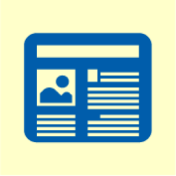 Articles
Articles
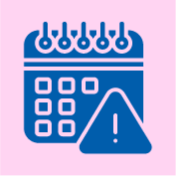 Overdue Payments
Overdue Payments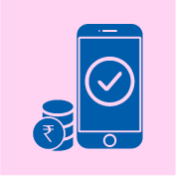 Other Payments
Other Payments
 Document Center
Document Center Bank details & Documents
Bank details & Documents Tax Invoice Certificate
Tax Invoice Certificate
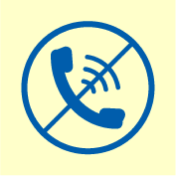 Do Not Call Service
Do Not Call Service
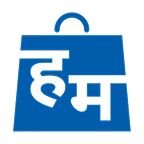 Hamara Mall Orders
Hamara Mall Orders

 Fixed Deposit (IFA) Partner
Fixed Deposit (IFA) Partner Loan (DSA) Partner
Loan (DSA) Partner Debt Management Partner
Debt Management Partner EMI Network Partner
EMI Network Partner Became a Merchant
Became a Merchant Partner Sign-in
Partner Sign-in
 Trade directly with your Demat A/c
Trade directly with your Demat A/c ITR
ITR My Garage
My Garage
 Live Videos - Beta
Live Videos - Beta
 Savings Offer
Savings Offer Smartphones
Smartphones LED TVs
LED TVs Washing Machines
Washing Machines Laptops
Laptops Refrigerators
Refrigerators Air Conditioners
Air Conditioners Air Coolers
Air Coolers Water Purifiers
Water Purifiers Tablets
Tablets Kitchen Appliances
Kitchen Appliances Mattresses
Mattresses Furniture
Furniture Music and Audio
Music and Audio Cameras & Accessories
Cameras & Accessories Cycle
Cycle Watches
Watches Tyres
Tyres Luggage & Travel
Luggage & Travel Fitness Equipment
Fitness Equipment Tractor
Tractor Easy EMI Loan
Easy EMI Loan
 vivo Mobiles
vivo Mobiles OPPO Mobiles
OPPO Mobiles Xiaomi Mobiles
Xiaomi Mobiles Sony LED TVs
Sony LED TVs Samsung LED TVs
Samsung LED TVs LG LED TVs
LG LED TVs Haier LED TVs
Haier LED TVs Godrej Refrigerators
Godrej Refrigerators Voltas Washing Machines
Voltas Washing Machines
 New Tractor Loan
New Tractor Loan Used Tractor Loan
Used Tractor Loan Loan Against Tractor
Loan Against Tractor Tractor Loan Balance Transfer
Tractor Loan Balance Transfer
 New Car Loan
New Car Loan New Cars Under ₹10 Lakh
New Cars Under ₹10 Lakh New Cars – ₹10–₹15 Lakh
New Cars – ₹10–₹15 Lakh New Cars – ₹15–₹20 Lakh
New Cars – ₹15–₹20 Lakh New Cars – ₹20–₹25 Lakh
New Cars – ₹20–₹25 Lakh New Car Brands
New Car Brands Petrol – New Cars
Petrol – New Cars Diesel – New Cars
Diesel – New Cars Electric – New Cars
Electric – New Cars CNG – New Cars
CNG – New Cars Hybrid – New Cars
Hybrid – New Cars










